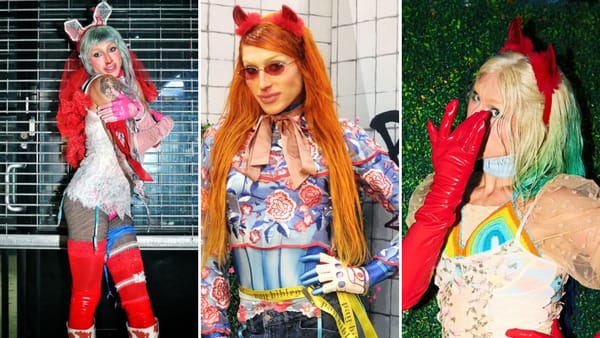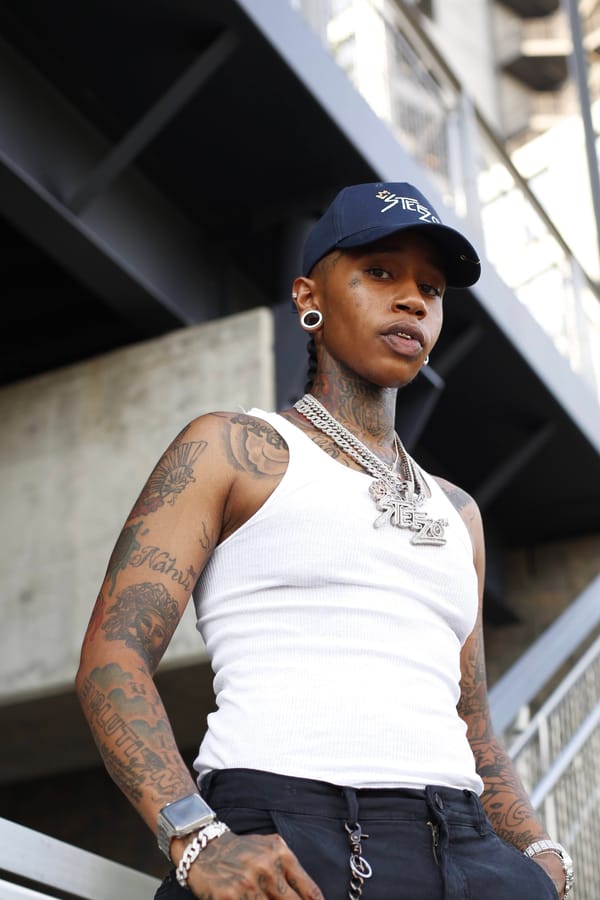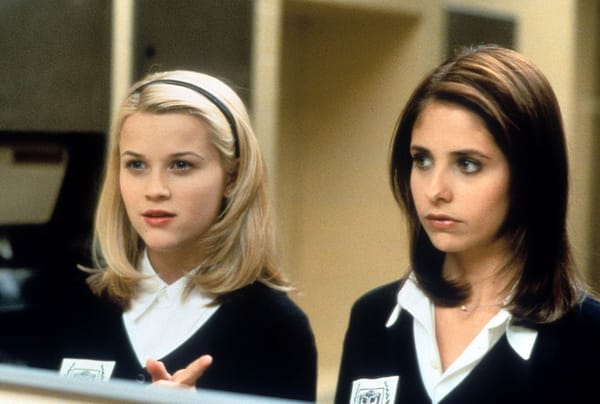The Business of Drag: SADBrunch is All About Drag Excellence
In the first installment of our "Business of Drag" series, John deBary spoke with the co-founders of drag collective SADBrunch about their origin story, business model, and their advice for new performers.

The Business of Drag is a Queerency interview series exploring the entrepreneurs, innovators, and artists of the drag economy.
Key Takeaways:
- Play the long game: it took co-founder Evon Michelle six years to build a career in drag
- SADBrunch has a multi-pronged business model that includes franchising
- Advice for upcoming drag performers: master the fundamentals and build a technical foundation
SADBrunch is a drag collective based out of Baltimore, Maryland. They’re known for their extensive roster of drag artists and perform all across the D.C., Maryland, and Virginia area. Queerency contributor John deBary caught up with co-founders Marcus and Evon to hear about how the collective got started, its business model, and their advice for new performers.
Let’s start by saying in your own words who you are, and tell me about SADBrunch.
Marcus: I’m Marcus, co-founder of SADBrunch. I typically deal with the operations side of our business.
Evon: I’m Evon, also co-founder of SADBrunch. Lead queen, mother queen of SADBrunch.
Do you both perform, or just Evon?
Marcus: Just Evon right now. I’m testing the waters for hopefully a reveal in a couple years if Evon allows it.
I want to know more about how SADBrunch started. And what’s the story behind the name?
Marcus: I was a marketing manager at a club here in Maryland called Cancun Cantina. I had just taken over events and the first thing I wanted to do was add something gay. It lacked LGBT inclusion and we were trying to figure out what would be the best launch to say, “Hey, we’re all inclusive.” After a couple of months came the decision of a drag brunch. The next question was, “Okay, how do we do this?” I scouted a couple different drag queens and eventually found Evon, and Evon hopped on it and took it full speed.
Fast forward to our first drag brunch that we had at Cancun Cantina. We had about 400 attendees, which for this type of event is unheard of. From that first show we had some wins, some fails, but we were able to craft a show that would be reoccurring. This was in 2019, right before the pandemic.
The name comes from “Saturdays Are Drag Brunch” and eventually we simplified it to SADBrunch. It’s a great conversation piece.

Is SADBrunch your full-time jobs?
Evon: Drag, in essence, is my full-time job. I only really perform on the weekends. Monday through Friday are business calls and emails and setting up events for the weekend.
What was the inspiration to start doing drag in the first place?
Evon: I went to my first drag show when I was a freshman in college. It was the first time I had seen drag in person and I fell in love with this queen. She was a Beyoncé impersonator from Pittsburgh. Later that night I got to go out to the bar and my friend was like, “Oh that’s the queen from earlier.” And she was out of drag and I was like, “What? No way.”
The transformation made me curious, like, “Is this something I can do?” So, I did it for Halloween one night for a frat party where all the girls got in and drank for free. I made it through the front door and got my red solo cup and that’s how I knew there was something there.
Typically when we work with a larger entity...we’re doing a flat rate, buyout, show-for-hire and they’re using the rights of SADBrunch and our platforms to advertise.
How long did it take before you made it your full-time gig?
Evon: About six years. March made ten years of me doing drag and performing, but it really took me about six years before I saw any kind of career path out of it. Once I moved to Baltimore and I saw everyone doing events I was like, this is something I could try. I’m a people person. I have a background in sales, performance, and customer service.
Starting SADBrunch was really the clicker because meeting Marcus and his background in business and marketing showed me a side of event planning that I didn’t really know about. And from there I took it and ran with it.
In terms of the economics of putting on a drag show, how does that usually shake out in terms of the expenses and revenue? Is it mostly booking fees, or tips?
Marcus: We have maybe three or four financial models that we use because we promote our shows in the DC-Maryland-Virginia area, but we also franchise our brand out to companies. An example would be Live Casino, they’re in about nine or ten different states. Typically when we work with a larger entity like that, we’re doing a flat rate, buyout, show-for-hire and they’re using the rights of SADBrunch and our platforms to advertise.
In terms of membership, what is the recruitment pipeline to be a member of SADBrunch?
Evon: Building "The Dollhouse" is based on looking for excellent drag talent leadership within the respective community; people who either produce their own shows [or] have their own entity in the community—that’s something we really look for. We’re looking for the professionalism, the work ethic, and there’s a certain standard of appearance that we look for—having that polished look, and above all being an entertainer. One of the biggest things is the ability to read a room and to change up their performance based on what's asked of them in that event, which all of our people do extremely well.
Focus on having a strong foundation, whether that’s in the technical side of drag, dancing, doing your makeup and hair, or just having a really core support team.
What’s something about being a drag performer that you wish more people in the general public knew?
Evon: I think it’s always important to remember that we are still people. At the end of the day, we are paid to put on a happy façade and be happy go lucky, but we still feel things, we still go through things, and we’re in a unique position to turn it off when the show starts. You definitely have to learn how to compartmentalize in this industry because once things start beeping in from other boxes and you’re like “Oh god..let me..how do I? Woah…”
My last question is if you have any advice for people who are just getting started doing drag or considering that path?
Evon: Focus on having a strong foundation, whether that’s in the technical side of drag, dancing, doing your makeup and hair, or just having a really core support team. Especially when you’re starting off in drag, there’s a lot of fails, a lot of trials and tribulations; having a really strong support system and foundation is the key to building a really successful career.
Information about upcoming shows can be found at SadBrunch.com and on Instagram @SADBrunch





